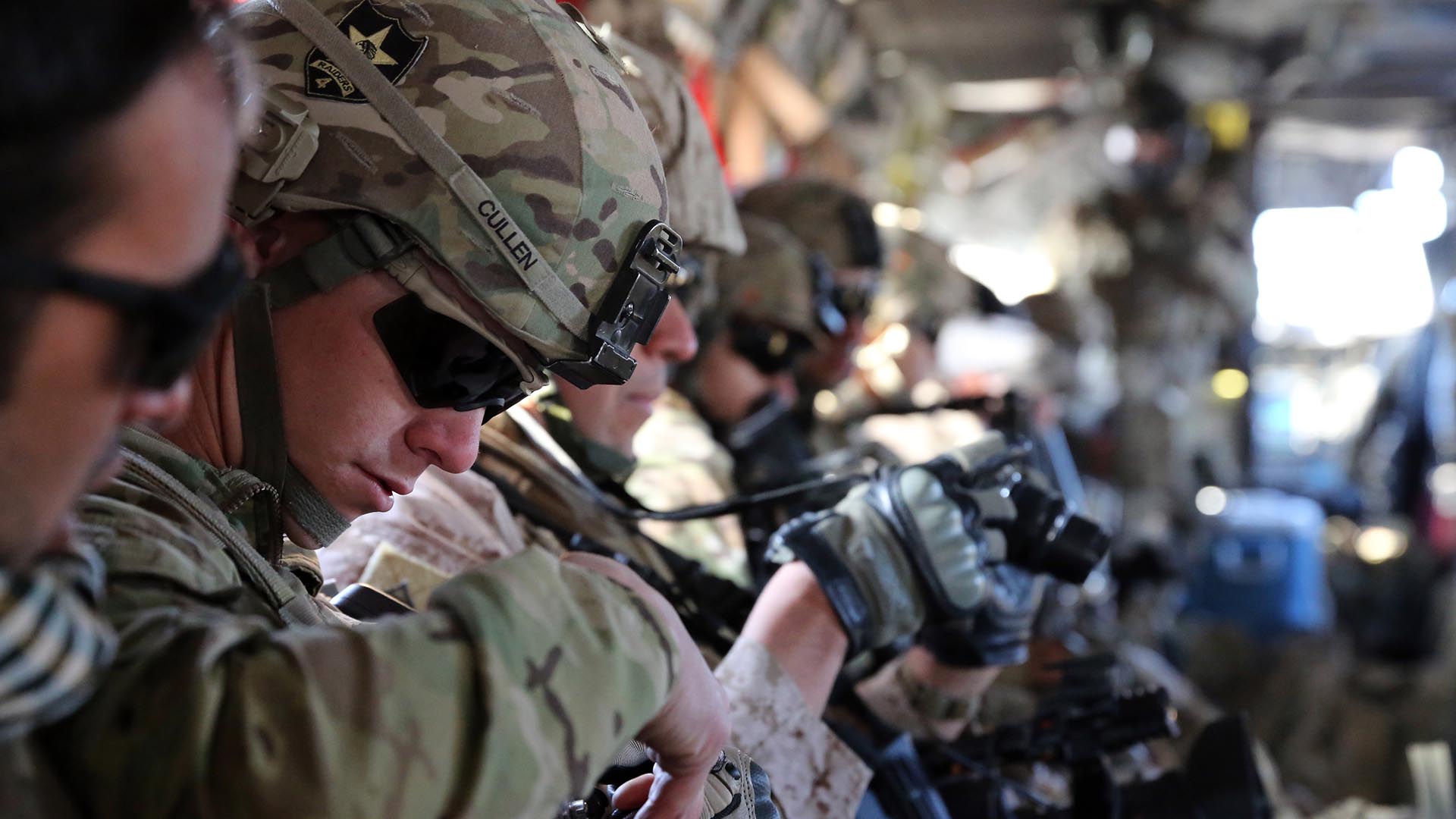

All U.S. troops are scheduled to leave Afghanistan within the next 90 days, but it remains uncertain whether they will actually depart as planned.
Rupam Jain and Charlotte Greenfield of Reuters recently reported that U.S. and other foreign troops will remain in Afghanistan beyond May because conditions on the ground do not allow for the full withdrawal called for under the Feb. 29 agreement between the Taliban and the United States.
The Reuters reporters cited four unnamed senior NATO officials for their Jan. 31 story.
However, NATO spokeswoman Oana Lungescu has issued a statement pushing back.
“No decision has been made,” Lungescu said, adding that NATO defense ministers will discuss the situation in Afghanistan during their upcoming meeting scheduled for Feb. 17 and 18.
“No NATO ally wants to stay in Afghanistan longer than necessary, but we have been clear that our presence remains conditions-based,” she continued. “Allies continue to assess the overall situation, and to consult on the way forward.”
Lungescu declined to comment further when contacted by Task & Purpose on Monday.
The Biden administration is currently evaluating whether the Taliban is engaging in meaningful peace negotiations with the Afghan government and meeting their other responsibilities under the Feb. 29 withdrawal agreement, a State Department spokesperson said.
Meanwhile, the new administration is also conducting a wider review of troop deployments abroad to make sure the missions meet today’s threats, the spokesperson said.
Roughly 2,500 U.S. troops are currently in Afghanistan. Former President Donald Trump ordered steep drawdowns of U.S. forces in the country in the last year of his administration despite worsening violence in Afghanistan.
Pentagon spokesman John Kirby has said that the Taliban have failed to meet their commitments to reduce the level of violence in Afghanistan and finally sever all ties with Al Qaeda.
“As long as they are not meeting their commitments, it’s going to be difficult for anybody at that negotiating table to meet their commitments – in fact; it wouldn’t be the wise course,” Kirby told reporters during a Jan. 28 Pentagon news briefing.
The following day, Kirby told Neil Cavuto, host of Fox News’ Your World, that no decisions have been made about future troop levels in Afghanistan.
Defense Secretary Lloyd Austin plans to speak with U.S. military commanders both in the field and at the Pentagon to have a better idea of what force levels in Afghanistan should look like going forward, Kirby said during the Jan. 29 interview.
That same day, Afghan President Ashraf Ghani said the Taliban are claiming “that they defeated the United States” and that both the United States and NATO are “on the run.”
“What has happened off the table is that peace is not been socialized to the Taliban commanders or rank and file,” Ghani said during the Aspen Security Forum. “Their leaders have taken pictures with suicide bombers and met wounded people in hospitals in Karachi and others.”
“If Afghanistan – God forbid – is left without a political settlement that brings peace, every terrorist group is going to migrate here and target us,” he continued. “Already, over 25 are here. They are trained by the Taliban. They are supported by them. They are nurtured by them. It’s a competitive but also a very cooperative relationship.”
A Taliban spokesman denied that they have declared victory, but an Afghan government official told Task & Purpose that the Taliban have been claiming that they defeated the United States since the Feb. 29 withdrawal agreement was signed.
Ultimately, President Joe Biden will have to decide whether to keep U.S. troops in Afghanistan past May or end the U.S. military’s 19-year commitment there.
If Biden decides that it is time for the United States to leave Afghanistan, it would come more than 10 years after he predicted the end of the Afghan war on NBC’s Meet the Press.
“We’re going to be totally out of there, come hell or high water, by 2014,” Biden said on Dec. 19, 2010.
Featured image: U.S. Army Spc. Matt Cullen, left, security force team member for Provincial Reconstruction Team (PRT) Farah, adjusts his gear while seated onboard a CH-47 Chinook helicopter prior to taking off for a key leader engagement in Lash-e Juwayn, Jan. 24, 2013. (U.S. Navy photo by HMC Josh Ives.)
